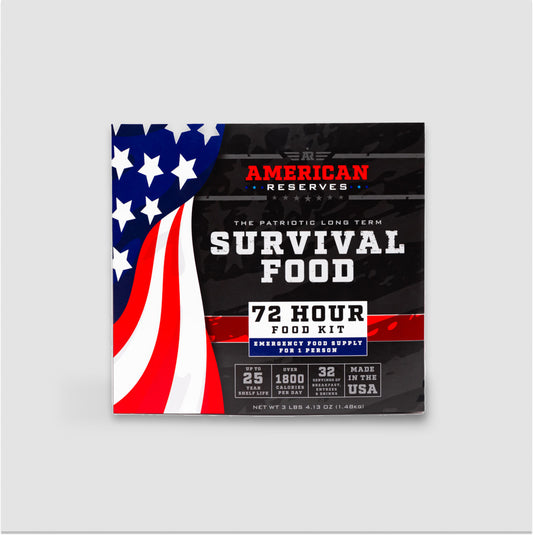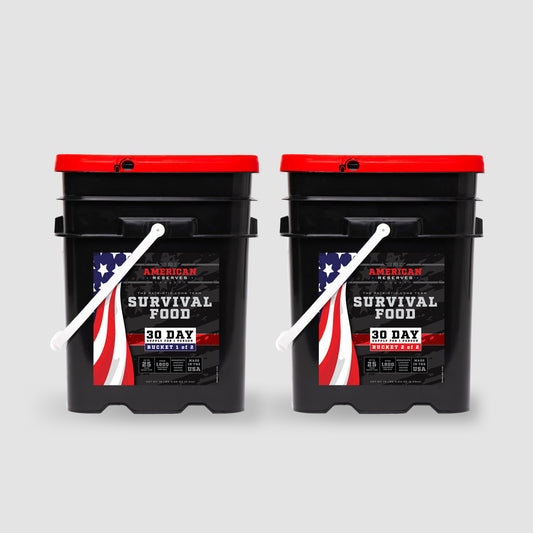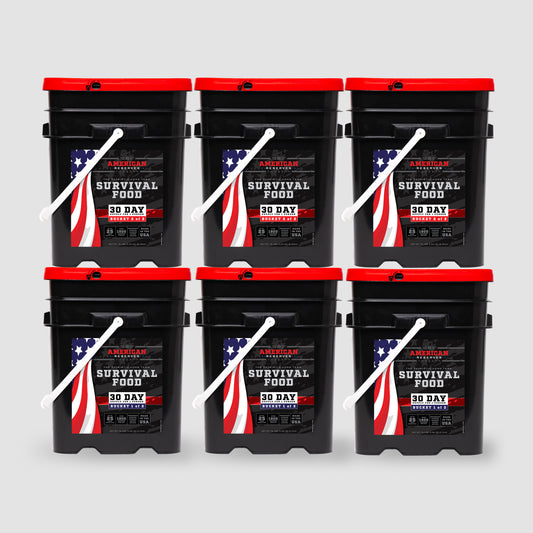
How To Store Water For Emergency: Step-by-Step
Emergencies can strike without warning, leaving many unprepared for the most basic necessities. For urban dwellers, outdoor enthusiasts, and new homeowners alike, understanding how to store water for emergency situations is essential for survival. This guide provides clear and practical steps to help you create a reliable water storage system, tailored to your specific needs and living conditions. Embrace the peace of mind that comes with knowing you are ready to face any crisis with a secure and accessible water supply.
Why Is It Crucial To Store Water For Emergencies?
Storing water for emergencies is crucial because it ensures access to a vital resource when regular water supplies are disrupted. Natural disasters, such as hurricanes, earthquakes, and floods, can compromise municipal water systems, leaving communities without clean drinking water. Additionally, societal disruptions or infrastructure failures can also lead to water shortages. Having a reliable supply of stored water can prevent dehydration, support basic hygiene, and provide peace of mind during crises. By proactively storing water, individuals and families can safeguard their health and well-being, ensuring they are prepared to face any emergency with confidence.
How To Store Water For Emergency
Step 1: Choose the Right Containers
Selecting appropriate containers is the first step in storing water for emergencies. Opt for food-grade plastic or glass containers that are specifically designed for water storage. Avoid using containers that previously held chemicals or non-food substances, as they can contaminate the water. Ensure the containers have tight-fitting lids to prevent leaks and contamination. For larger quantities, consider using water storage barrels or tanks that are BPA-free and approved for potable water.
Step 2: Clean and Prepare Containers
Before filling your containers, it's essential to clean and sanitize them thoroughly. Wash each container with soap and water, then rinse well. To sanitize, use a solution of one teaspoon of unscented liquid household chlorine bleach per quart of water. Swirl the solution around the container, ensuring it contacts all surfaces, then rinse with clean water. This step helps eliminate any bacteria or contaminants that could spoil your stored water.
Step 3: Fill Containers with Safe Water
Fill your cleaned containers with safe, potable water. Ensuring potability is crucial for preventing waterborne illnesses during emergencies. If using tap water, ensure it is from a reliable and uncontaminated source. For added safety, you can treat the water with a few drops of unscented liquid household chlorine bleach (about 8 drops per gallon) to kill any potential pathogens. Alternatively, you can use commercially bottled water, which is already treated and sealed for long-term storage.
Step 4: Seal and Label Containers
Once filled, securely seal each container with its lid to prevent contamination. Label each container with the date of storage to keep track of its age. This practice helps in rotating your water supply and ensures you use the oldest water first. Proper labeling also aids in identifying the contents during an emergency, making it easier to manage your resources.
Step 5: Store Containers in a Cool, Dark Place
Store your water containers in a cool, dark place away from direct sunlight and extreme temperatures. Ideal storage locations include basements, closets, or under beds. Avoid storing water near chemicals, gasoline, or other hazardous materials that could potentially leak and contaminate your supply. Keeping water in a stable environment helps maintain its quality and extends its shelf life.
Step 6: Rotate and Maintain Your Water Supply
Regularly rotate your stored water to ensure it remains fresh and safe to drink, maintaining proper hydration during emergencies. A good rule of thumb is to replace stored water every six months. During rotation, inspect containers for any signs of leaks, damage, or contamination. Clean and sanitize containers before refilling them with fresh water. Consistent maintenance ensures your emergency water supply is always ready for use.
Step 7: Identify Alternative Water Sources
In addition to stored water, identify alternative water sources that can be used during emergencies. These can include natural sources like rivers, lakes, and rainwater, as well as non-traditional sources such as water heaters and toilet tanks (excluding the bowl). Ensure you have the necessary tools and knowledge for water purification to treat and purify water from these sources to make it safe for consumption.
Step 8: Plan for Limited Space Storage
For those with limited storage space, consider creative solutions to maximize your water storage capacity. Use stackable water containers, collapsible water bags, or portable water storage options like water bricks, and consider including a filtration system to ensure water quality. Utilize under-bed storage, closet shelves, or other unused spaces in your home. Efficient use of space ensures you have an adequate water supply without compromising your living area.
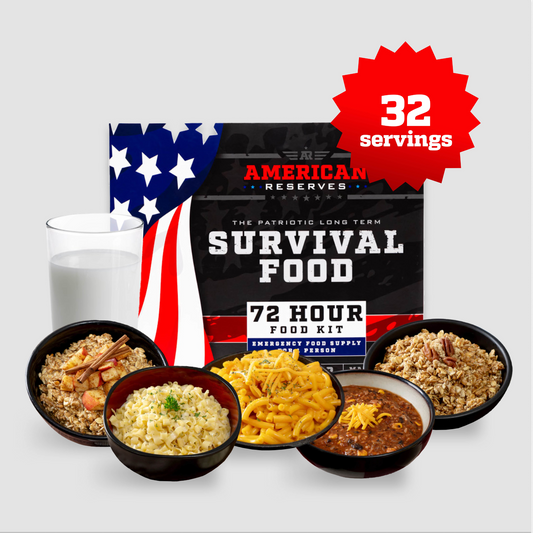
72 Hour Emergency Food and Drink Supply - 32 Servings
$36.99
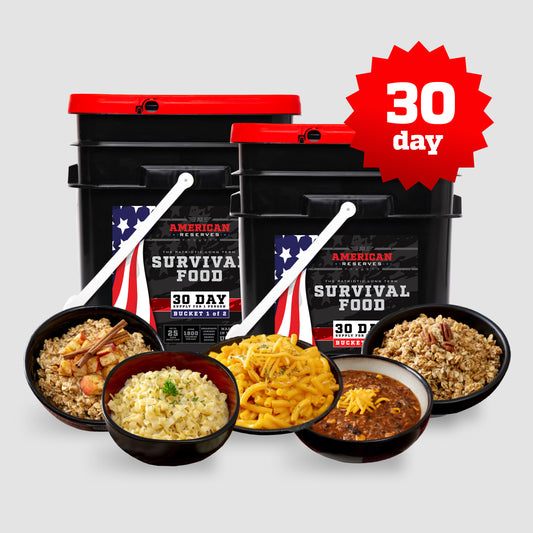
30 Day Emergency Food Supply
$319.99
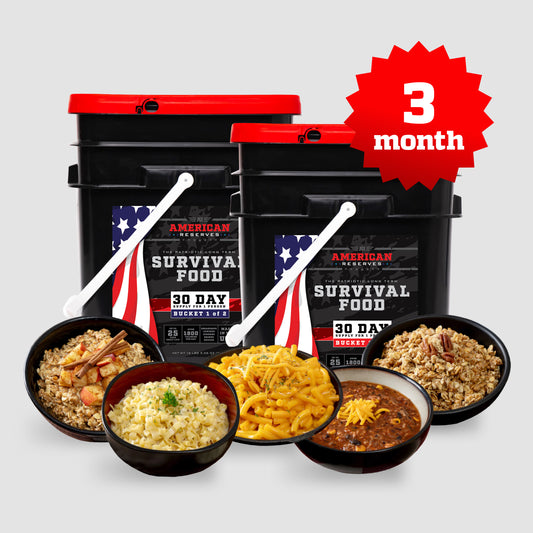
3 Month Emergency Food Supply
$835.00
How Long Can You Store Water For Emergencies?
The duration for which you can store water for emergencies largely depends on the type of container and the storage conditions. Commercially bottled water, if unopened and stored in a cool, dark place, can last indefinitely, although it's generally recommended to replace it every two years for optimal taste and safety. Water stored in food-grade containers should be rotated every six months to ensure it remains pure, fresh, and free from contamination. Properly treated and stored water can remain safe for long-term use, but regular inspection and maintenance are crucial to ensure its quality. By adhering to these guidelines, you can maintain a reliable and safe water supply for any emergency situation.
What Types Of Containers Are Best For Storing Water Long-Term?
- Food-Grade Plastic Containers: These containers are specifically designed for storing consumables and are free from harmful chemicals. They come in various sizes, from small bottles to large barrels, and are durable and lightweight.
- Glass Containers: Glass is an excellent option for long-term water storage as it does not leach chemicals and is impermeable to gases. Ensure the glass is thick and stored in a safe place to prevent breakage.
- Stainless Steel Containers: Stainless steel is highly durable and resistant to corrosion, making it ideal for long-term storage. Choose containers that are specifically labeled as food-grade to ensure they are safe for storing water.
- Water Storage Barrels: Large, BPA-free plastic barrels are perfect for storing significant amounts of water. These barrels typically hold 55 gallons and are designed to be airtight and UV-resistant, protecting the water from contamination and light exposure.
- Collapsible Water Containers: These flexible, food-grade plastic containers are space-efficient and can be easily stored when not in use. They are ideal for those with limited storage space and can be filled and expanded as needed during an emergency.
How Much Water Do You Need To Store For Each Person In Your Household?
For emergency preparedness, it is recommended to store at least one gallon of water per person per day. This amount accounts for both drinking and basic hygiene needs. Ideally, you should have a minimum three-day supply, equating to three gallons per person, but a two-week supply is preferable for extended emergencies. For households with young children, elderly members, or individuals with specific medical needs, consider storing additional water to accommodate their requirements. Pets should also be factored into your calculations, with an additional gallon per pet per day. By planning accordingly, you can ensure that every member of your household has sufficient water to stay hydrated and maintain hygiene during a crisis.
Additional Emergency Tips and Considerations
- Regularly Update Your Emergency Plan: Ensure that your emergency plan is current and includes updated contact information, evacuation routes, and meeting points. Regularly review and practice the plan with all household members to ensure everyone knows what to do in a crisis.
- Invest in Freeze-Dried Survival Food Kits: Freeze-dried survival food kits, such as those from reputable brands, provide long-lasting, nutritious meals that require minimal preparation. These kits are lightweight, easy to store, and can be a lifesaver during extended emergencies.
- Keep a First Aid Kit Handy: A well-stocked first aid kit is essential for treating minor injuries and illnesses during emergencies. Ensure your kit includes bandages, antiseptics, pain relievers, and any necessary prescription medications.
- Maintain Emergency Communication Tools: Have multiple ways to communicate during an emergency, such as a battery-powered or hand-crank radio, a fully charged mobile phone with backup power banks, and a list of important contacts written down in case digital devices fail.
- Prepare for Power Outages: Equip your home with essential items for power outages, including flashlights, extra batteries, candles, and a manual can opener. Consider investing in a portable generator to keep critical appliances running and ensure you have a supply of fuel stored safely.
Conclusion
In conclusion, being prepared with a reliable water storage system is a fundamental aspect of emergency readiness. By understanding the importance of water storage, choosing the right containers, and following proper storage and maintenance practices, you can ensure your household remains hydrated and healthy during any crisis. Additionally, incorporating other emergency preparedness measures, such as freeze-dried survival food kits and a comprehensive emergency plan, further enhances your resilience. Taking these proactive steps not only safeguards your family's well-being but also provides peace of mind, knowing you are equipped to handle unforeseen events with confidence and assurance.
Final Thoughts
As a pioneer in the field of emergency preparedness, American Reserves offers unparalleled emergency kit supplies made from the finest locally sourced ingredients in the USA. Our products are built to last, providing crucial nutrition and boasting an extraordinary 25-year shelf life. When it comes to preparing for the unexpected, American Reserves delivers the reliability and quality you need. Equip yourself with our premium supplies and ensure your readiness for any situation.
Sources
